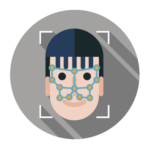“The new microcontroller-based solution is designed to enable offline facial and expression recognition for smart devices – a world’s first, according to NXP.”

You may soon have a smart thermostat that can recognize your face, thanks to a new piece of technology from NXP Semiconductors.
The new microcontroller-based solution is designed to enable offline facial and expression recognition for smart devices – a world’s first, according to NXP. It’s based on the i.MX RT106F crossover MCU, which leverages NXP’s OASIS face biometrics engine, a solution enabling face detection and facial recognition, with an anti-spoofing capability to boot.
The end result is a face-scanning MCU that can operate without any need to connect to the cloud, and that is cost-effective enough to be implemented into a range of smart home products.
“Think about a toy that recognizes each member of the family and responds appropriately depending on their facial expressions or a smart appliance that can intuitively adjust its settings to a user’s preferences based on previous interaction,” explained NXP IoT Solutions director Denis Cabrol in a statement announcing the offering. “Developers are no longer constrained to Linux-based systems running on expensive multicore application processors that require large flash memory and SDRAM footprints, complex power management and costly, high layer count printed circuit boards,” he added later.
The solution’s announcement arrives amid growing excitement about smart home devices as the Internet of Things continues to expand into more aspects of everyday life.
NXP says its new solution is available at less than half the cost of microprocessor-based alternatives, and that it’s already working with OEMs on early evaluation and development kits. Going forward, the company is aiming for a wider market launch starting in the first quarter of 2020.
–
September 6, 2019 – by Alex Perala
Like all biometrics solutions, face recognition technology measures and matches the unique characteristics for the purposes of identification or authentication. Often leveraging a digital or connected camera, facial recognition software can detect faces in images, quantify their features, and then match them against stored templates in a database.
Face scanning biometric tech is incredibly versatile and this is reflected in its wide range of potential applications. Learn more on FindBiometrics’ Facial Recognition page.






Follow Us